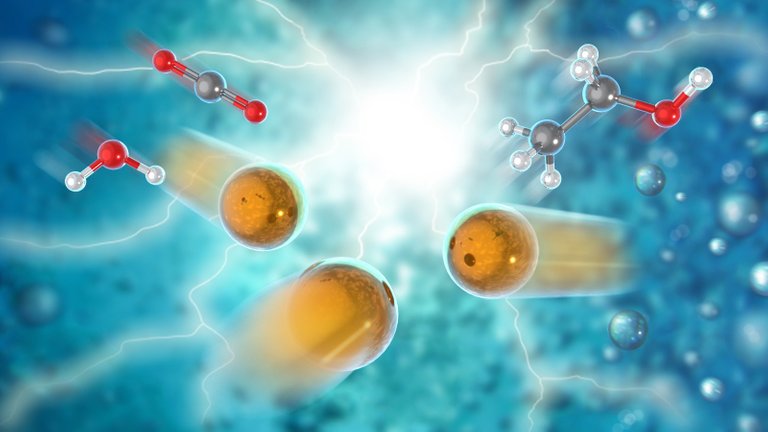New Electrocatalyst Makes Ethanol From Carbon Dioxide
Carbon dioxide is one hell of a stable molecule. But an effective and cheap electrocatalyst from atomically dispersed copper with a bit of water can transform it into useful ethanol.

Image Credit by Argonne National Laboratory.
- Be also sure to check out my other posts and follow me @kralizec and subscribe to my Youtube channel at Kralizec Gaming Youtube Channel
It’s almost like alchemy. You take a catalyst – usually some exotic things completely irrelevant to the intended result of the reaction – and suddenly, things happen. Nowadays, catalysts are quite literally life-saving in the majority of large industrial processes. But there are still new things to be found.
A research team led by experts from the Argonne National Laboratory in the United States recently developed a new electrocatalyst that is an alcoholics dream. It enables a reaction in which carbon dioxide and water are transformed into ethanol. And not only does it do it highly effectively, but it is also very selective, and very cheap. And ethanol itself is a very valuable commodity that can be added into petrol or used for many different products in the chemical, cosmetic or even pharmaceutical industries.
As the research lead Di-Jia Liu says, their catalyst could improve the development of circular carbon economics. Such an industry would still produce carbon dioxide, but instead of blindly releasing it into the atmosphere it reuses it. The process itself can use carbon dioxide from many industrial processes into useful products at a reasonable price.
The new electrocatalyst is made from atomically dispersed copper on a base of carbon dust. The catalyst disassembles the atoms because of an electrochemical reaction and then they get rebuilt into ethanol atoms. The electrocatalytic selectivity of the process is over 90 percent. That is much more than in other similar processes. Another piece of great news is the fact that the new catalyst is stable for a long time at low voltages.
Under normal circumstances, a carbon dioxide molecule is very stable. This is the reason why changing it into a different molecule requires a lot of energy and thus a lot of money. Liu and his coworkers give us the chance to connect their electrocatalyst with cheap electricity from renewable sources available at non-peak times in the electric grid. And since the electrocatalysis works at low temperatures and pressures it is easy to turn it on and off again based on the availability of renewable energy.
The development of the electrocatalyst was connected with research made in individual departments of the Argonne laboratories. Work was done in the Advanced Proton Source, Center for Nanoscale Materials, and in the Argonne’s Laboratory Computing Resource Center. The researchers observed the electrochemical reaction in great detail, in high resolutions, tested, tested, and modeled until they got the electrocatalyst. Now, cooperation with industrial partners awaits them, and hopefully, soon, we will see the technology being used all over the world.
Sources:
- https://www.nature.com/articles/s41560-020-0666-x
*https://www.anl.gov/article/turning-carbon-dioxide-into-liquid-fuel
- If you like the content I’m producing about science maybe you will like the content I produce about gaming as well! Be sure to check out my other posts!